When you hear the words dark fantasy romance, a lot of things can come to mind. For me, I immediately think of Mallory Dunlin, a Kindle Unlimited author who has been writing delicious slow-burn standalone dark fantasy romances between a touch-starved monster and a strong woman. As a queer, neurodivergent, and disabled author, Dunlin explores trauma, recovery, and the healing power of accepting others as they are. Each romance is slow-burn, but the happy endings are very well-earned and you might need tissues. Maybe.
She currently has two on-going series. Published first, Monsters of Faery currently has two books, with four more planned set in the modern day but take place primarily in the land of faery. The second, Echoes of the Void is a high fantasy setting with Renaissance-level technology in a universe with multiple planes and a really fascinating magic system.
If you like magic systems, musings on morality, complex (hot!) characters having agency (and taking it back when it’s been stolen from them), cuddlemonsters, realistic portrayals of recovery and finding hope, then her books are for you.
Dunlin has also been in one anthology (which is where I first read her) and is in Crimson Vendetta which releases next week! The first author whose first POV writing worked for me, I fell in love with her characters and she has become one of my most recommended authors.
In preparation for the new release, where she’s publishing her first MMF story set in the world of Faery, Dunlin sat down with me for an interview where we went deep into her worldbuilding and what we can expect in future books. For readers of fantasy romance, you’ll enjoy her thoughtful answers about how certain tropes play out in fiction that would not hold water in real life. Plus get a sneak peak into “Taming the Wild Hunt” and a glimpse of the next Faery lead hero character.
Hi Mallory! Thanks for speaking with us. Can you start by telling us a bit about yourself? What got you into writing?
MD: Glad to be here! I’ve been writing since I was young – I actually had a short in a lit mag when I was a teenager and won a few NaNoWriMos – but I didn’t complete my first novel until Dec 2021. I got really sick in Nov 2021 (I actually had a stroke due to a COVID-19 infection), and during recovery I ended up writing for fifteen hours a day! Once I’d finished the first one, the seal was broken, and I’ve been cheerfully writing books ever since.
For a little about myself: I have two incredibly spoiled borzoi and send pictures of them to everyone I know (including my newsletter), my favorite food is miso soup, I collect landscapes but I hate spending money so I am constantly perusing the art section of thrift stores, I’m terrified of centipedes, and when I was a child I would hide in cupboards so I could daydream instead of doing my chores.
You currently have two ongoing series though the books all can standalone. What inspired the Echoes of the Void and Monsters of Faery universes? Did you think of one before the other?
MD: Echoes came first! Sometimes I refer to Noetana [the world of Echoes of the Void] as my “playground,” because it’s where I put all my weirdest worldbuilding. The spark for Echoes was two-fold; I had a magic system I was itching to use, and I wanted to write a story where a powerful sorceress got accidentally bound to an incubus. Everything sort of sprang naturally from those two starting points.
I didn’t actually come up with the Monsters of Faery world until I’d written two Echoes books (The Sorceress and the Incubus and The Changeling and the Dragon), and several other stories besides. Fated mates aren’t a thing in Noetana, but I wanted to do a fated mates book where the options weren’t all romantic. I really like fae, and fated mates are a staple of fae romance, so hence the world was born!
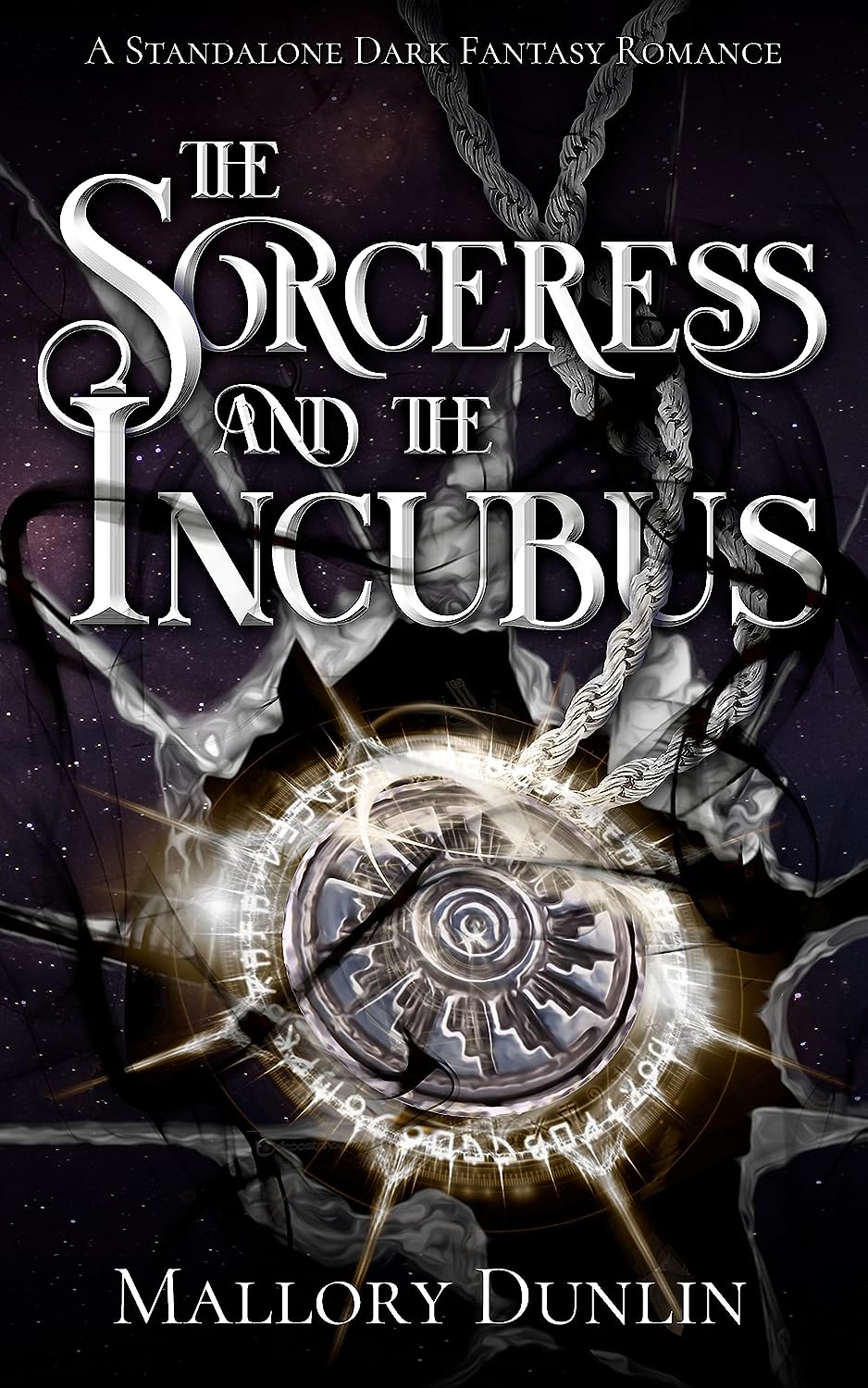
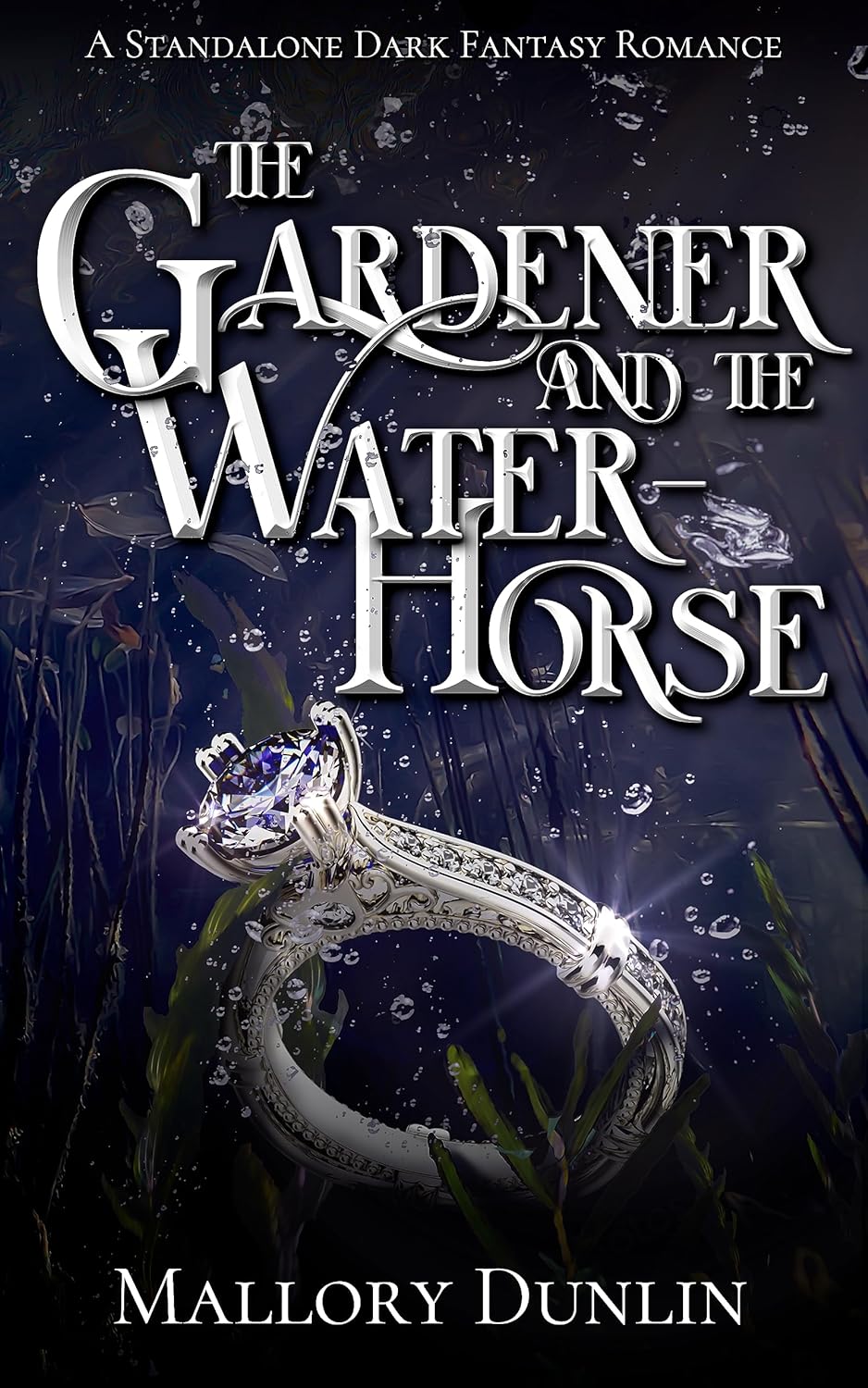
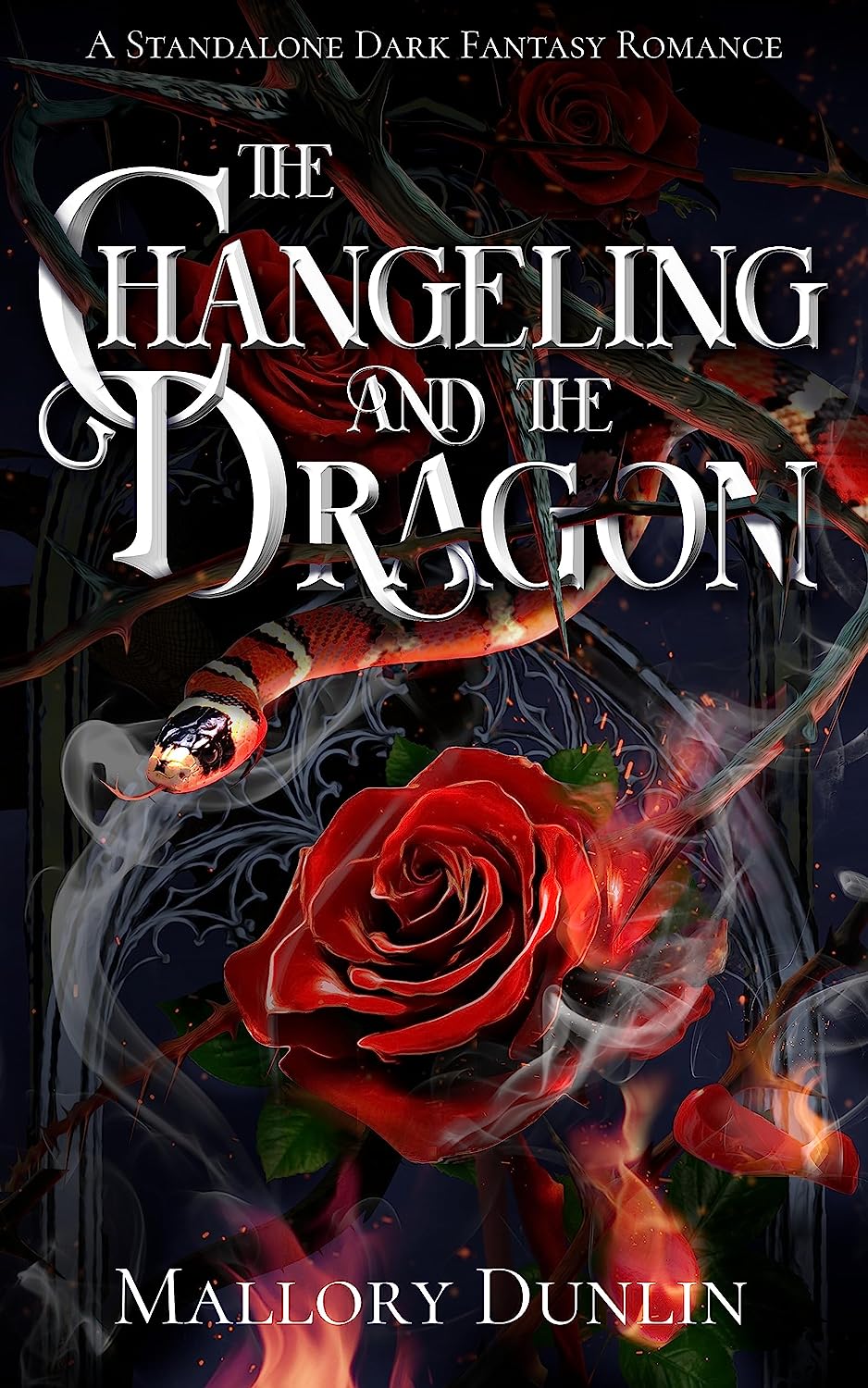
The Echoes of the Void universe is particularly fascinating because you’ve set up a very detailed magic and plane system in Noetana. There are four planes and they each have different magical characteristics. For example, The Material Plane is the home of the mortals which is opposed by The Ethereal Plane, the home of the fae. Both planes are spherical. Can you tell us more about how these planes came to be and how they work?
MD: Don’t mind if I do!
The only two “true” planes are the Abyssal and Celestial Planes, which both stretch forever in every direction. Those two planes are basically rumpled up next to each other, like two cloth sheets laid on top of each other and jostled around. On occasion, they break through their natural repulsion and smack into each other. When that happens, the parts that touch annihilate each other, then re-coalesce, leaving a sphere (or spheres) floating in the metaphysical space between the Abyssal and Celestial Planes. Over time, or when something contacts it, the sphere will separate into two opposed spherical “planes” overlaid in metaphysical space.
Simple, right?
It doesn’t have to be a Material/Ethereal pairing, either. It could be something like Meteoric/Glacial, or Urban/Verdant, or Vibrance/Despondence. The metaphorical sky’s the limit. Of course, the people living on and around the paired Material/Ethereal Spheres don’t know that. The stars and shadows do (some of them, at least), but they’re not telling.
It can be our little secret.
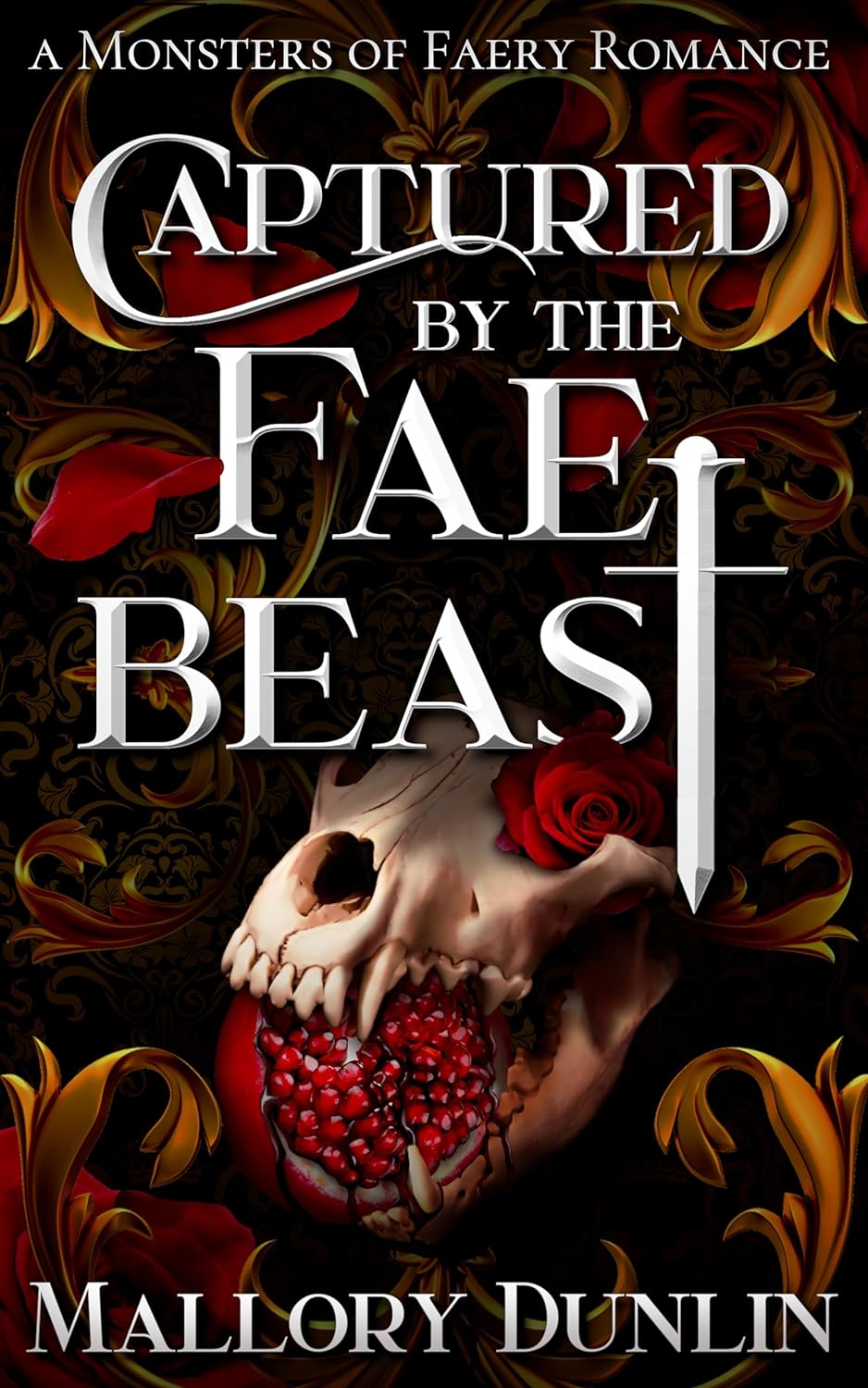
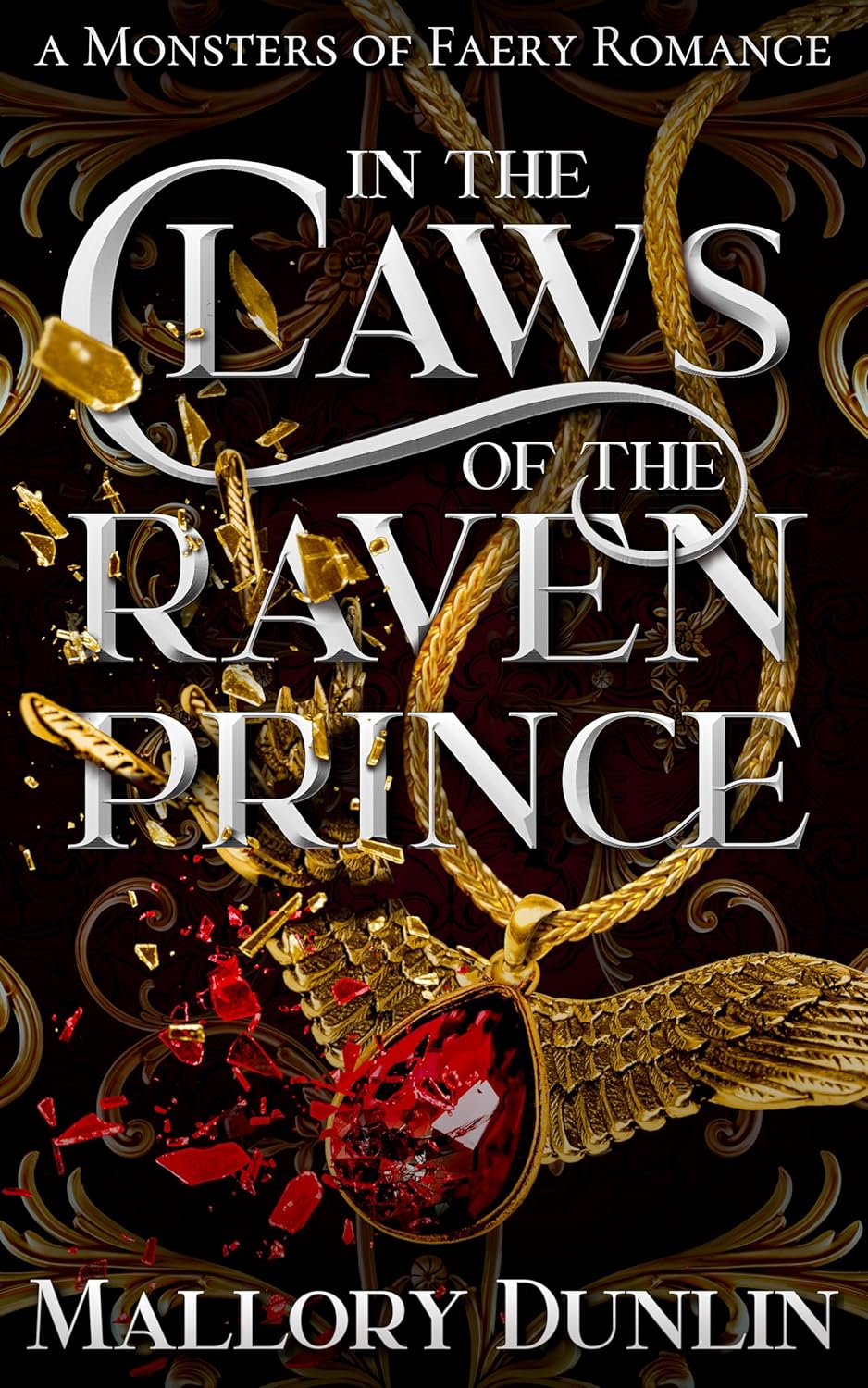
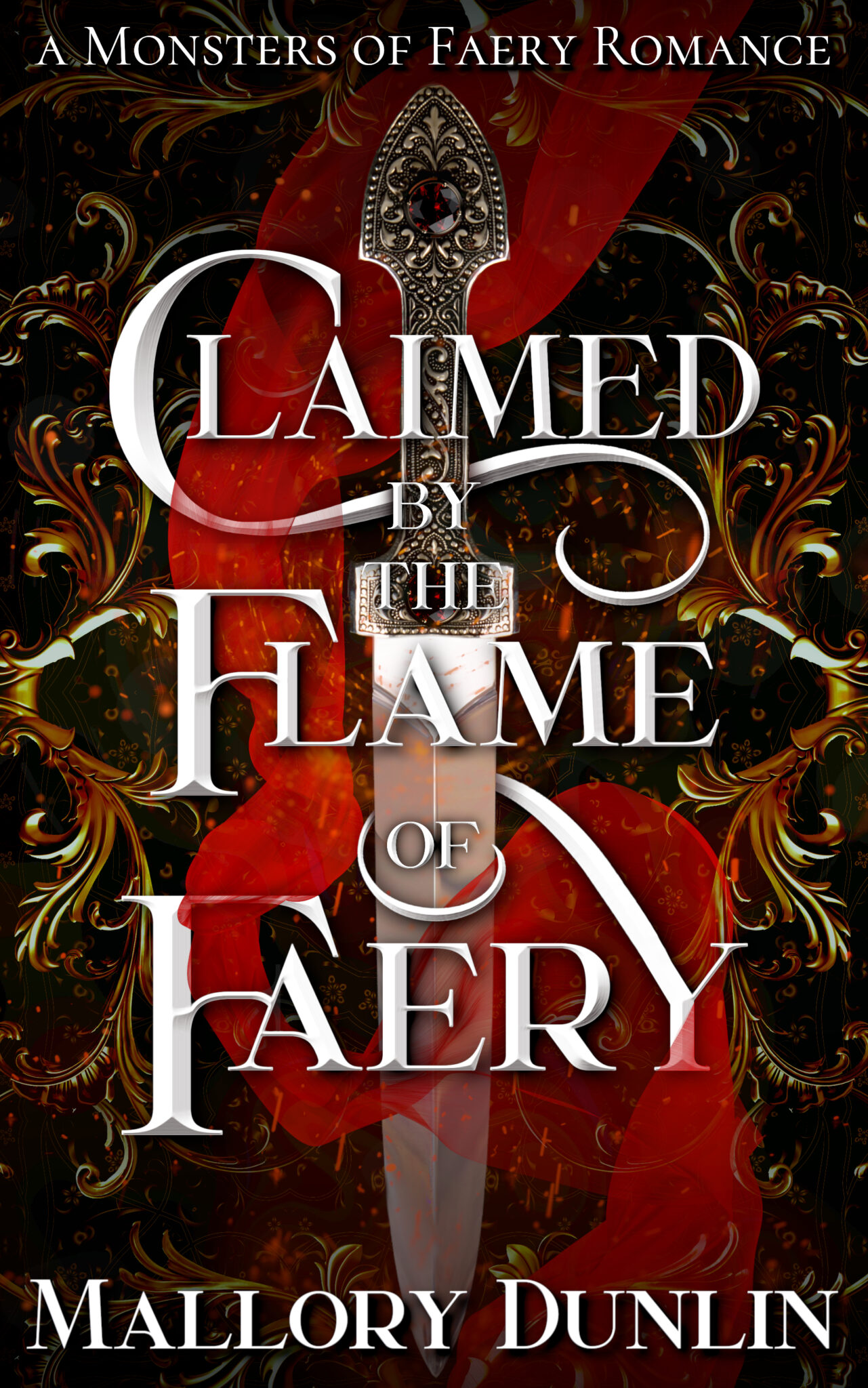
In the same vein, the Monsters of Faery world has a complex soulmates system for the fans of fated mates. The fae divide the system into fourteen different kinds of relationships and only half involve affection, so someone’s soulmate could be their enemy! How did you develop this system? Do you have any plans for a nemesis soulmate pair? I guess they’d eventually have to be romantic, or it wouldn’t be very romance novel-like.
(Lilly and Ayre do start out as literal enemies at war in Claws of the Raven Prince.)
MD: Despite the fact that I write, read, and adore romances, I’ve never been a believer in the idea that romance is the end-all be-all for a relationship. In fact, in Ancient Greek, there are eight words for love, each with a slightly different meaning, and only a couple of which would fall under “romantic” nowadays. One of those eight is “self-love,” so I dropped that one, and built the soulmate system around the other seven.
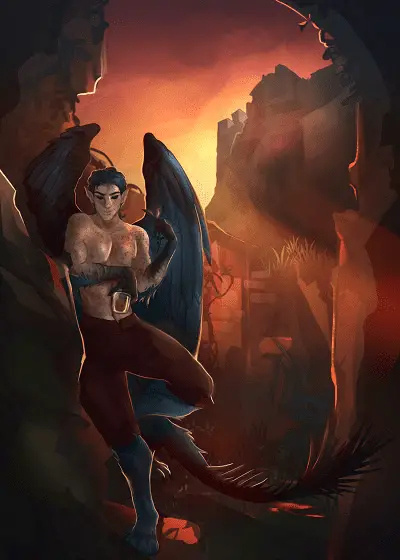
To get fourteen, I gave each of the kinds of love an aligned and an oppositional type. So, for example, obsession (mania) can turn soulmates into nemeses or devotees, while playful love (ludus) can turn them into flirtmates or rivals. This spilled over into the worldbuilding: the fae of Monsters of Faery regard oppositional relationships as equally important to aligned ones. If you wanted to introduce your parents to your favorite opponent, that would be a totally normal thing to do.
I don’t have any plans for a nemesis soulmate pair as a leading pair, but I might feature one (or half of one) as side characters down the road.
Additionally, there are fae in both universes, but the universes are completely separate. How do you keep track of what you’ve explained in each one? Do you have a series bible?
MD: Echoes has a massive series bible that keeps track of all the worldbuilding, character details, and the timeline. Given the amount of detail in the cosmology, it’s pretty critical for keeping it all straight. Monsters of Faery has one, too, but it’s only a couple pages long, and mainly devoted to named characters and dates, as well as the world map. But as far as the fae go, the only thing that’s actually the same between the two worlds is their name. They’re so different that there’s not really a risk of crossover for me.
One of the things I and other readers love about your books is that disabled and neurodivergent characters are front and center and your universes are truly inclusive. How do you develop your characters and settings?
MD: Honestly, I’m typically a “discovery writer” in that I don’t often focus on developing characters or settings. I’m disabled and neurodivergent, and so are many of my friends, so writing stories about people like us is a natural extension of my real life. Generally I’ll have a loose idea and write a few scenes to get a feel for the characters and setting, then figure out how those scenes would string together most naturally. If I run into a snag, I’ll take a step back to figure out how to fit things together before diving back in.
I wish I had a more straightforward answer, but that’s really it! I develop as I go. Kind of messy, and my first drafts absolutely require a thorough smoothing pass, but it works for me.
Your books are all very slow-burn in the best way, but how do you keep the tension between the two characters as central to the story without it being repetitive? Each relationship you’ve written so far has been very unique.
MD: Discovery writer, remember?
Just kidding. I actually have a good answer for this! I think it comes down to what’s holding the characters apart from each other. As long as those things are different from story to story, the way the romance plays out will look different.
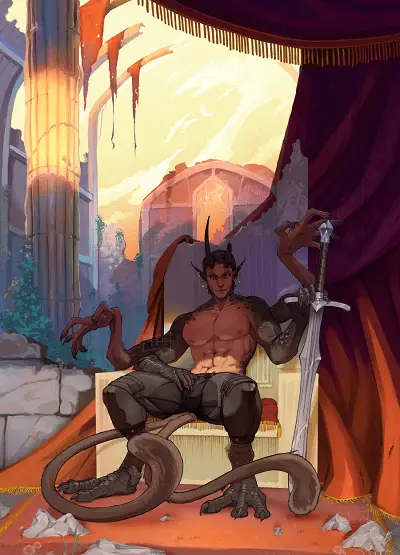
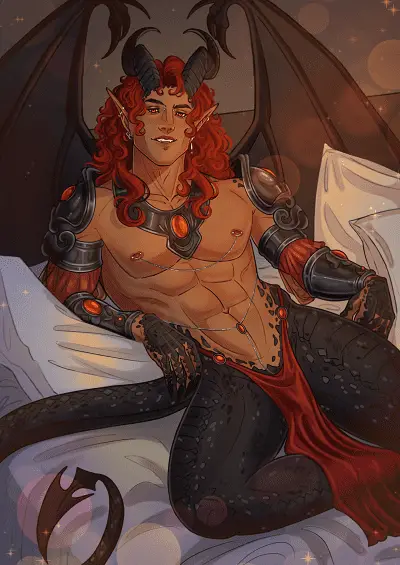
For example, in Captured by the Fae Beast, Leah is struggling to move on from the life she lost so suddenly, and in focusing on the past she can’t see what’s right in front of her. Similarly, Dain is so trapped in thinking about himself the way others have seen him that he can’t trust Leah to choose him, and so he holds back instead of giving her himself.
The second book in the series (technically a prequel but definitely better if read second), In the Claws of the Raven Prince, has a very similar setup – a woman who’s lost her whole life ending up in the care of a beastly fae prince with a dire reputation and a tendency towards violently removing problems – but the divide between them is very different. Lilly might literally die if she stands by Ayre, and is too afraid of that fate to try to escape it, while Ayre is so determined not to surrender to his own animalistic nature that he refuses to accept the things he passionately wants. As a result, their romance looks a lot different from Dain and Leah’s!
The third book, Claimed by the Flame of Faery (out October 18th) with Varistan is different yet again – but I’ll let you discover how for yourself 😉
Another major aspect of your writing is the idea of people not feeling like they fit in or have a home. In some cases, they are stuck between different worlds literally. How do you conceptualize the idea of home?
MD: Growing up, I was pretty viciously bullied in school, but my family was wonderful, so home was my safe haven. A lot of what I write is about finding that safe haven; the place in the world where you can always be yourself without pressure or fear of consequences. I think “home” in that sense can take a lot of shapes. Your home might be a person you adore, or a house you’ve set up just how you like it, or that little patch in the woods where the creek hits the stones just right and you can forget about the rest of the world. As long as it’s yours.
Making connections is an integral part of your characters’ journeys. I call the love interests cuddlemonsters because they’re all monsters or other types of beings and very touch starved. Did you set out to write this kind of trope?
MD: While I did set out to write monster romances in specific, the fact that they’re all touch-starved cuddlebugs, wasn’t on purpose. One of the things that drew me towards writing about monsters, though, was exploring what it means to be set apart from society by things out of your control, and what it’s like to be loved for those things, instead. A lack of certain kinds of affection, and a craving for them, followed naturally from that.
In Monsters of Faery, soulmates are seen by many fae as predestined for example and the characters are (if they are on the same page, at least) very much possessive of one another and their relationship. In Echoes of the Void, Rain and Saker are literally magically bonded on accident at the start of The Sorceress and the Incubus. Sersha owes a literal life debt to Qavan in The Changeling and The Dragon and perceives her relationship with him as one of servant and master since she is a changeling and understands life as a fae would.
Paranormal and fantasy romance particularly play with ideas around possession through the idea of fated or chosen mates who are the one (or more) partners that are “meant to be” with the main character. What do you think about the idea of relationships as ownership as presented or explored in these genres?
MD: I think believing that being in a relationship with someone gives you any form of ownership over them is a dangerous road to follow. People belong to themselves. Protectiveness and possessiveness, and even emotions like jealousy, are all completely natural things to feel, and some of their expressions are healthy, but people should always be able to revoke their consent.
In real life, a lot of the extreme possessiveness characters in romances (especially male leads) show would be a huge red flag, because real people aren’t perfect. In romances, we have the safety net of knowing everything works out perfectly, and we can crank the emotions up. Possessiveness and obsession in stories gives us all the sparkly feelings of he loves me so much that he can’t control himself without any of the danger inherent in the real world. The happily-ever-after ending, rather than being restrictive, gives us a ton of freedom!
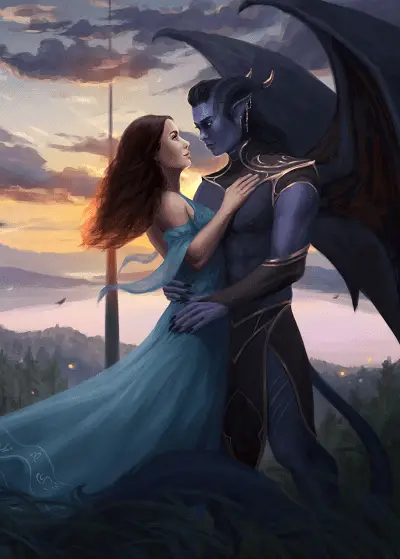
You mentioned two of my books where there are power structures at play outside of the romantic relationship. One thing I try to do with situations like that is put the importance of consent at the forefront. Rain and Saker are constantly renegotiating their relationship, and very explicitly, because of how much control she can exercise over him. Qavan meets Sersha in her culture and gives her ways to interact with him that feel natural without taking advantage of her.
I think I take this to the extreme with In the Claws of the Raven Prince. Ayre’s possessiveness is to the point where he wants to kill anyone who touches her before they’re mated, because his mind is literally half-animal, and animals don’t really have a concept of consent. But it’s Lilly who sets the terms for it when Ayre is fighting for control. Even (or especially) in a situation like theirs, I want to emphasize the consent and negotiation that’s necessary for any type of power exchange.
A bit of a dissertation, I know, but this is something I’m very passionate about!
I originally found you when I read an anthology which included How to Slay a Dragon which is currently available for free, but you’ve planned to expand it eventually. You’re going to be in Crimson Vendetta: A Monster Anthology releasing next week. Can you tell us how you got involved in both anthologies? Is writing for an anthology different than writing your own novels?
MD: I was invited to both anthologies by authors I know! So that was a matter of networking.
Since I already work with strong deadlines in mind for my novels, the main difference with anthologies is the length. Anthologies typically have word minimums and word limits – for the anthology that included “How to Slay a Dragon”, that limit was 20,000 words, and for Crimson Vendetta, it was 40,000 – so the type of story I can tell is different. It’s a nice restriction to have, actually, since I have a tendency towards tomes. I’m also able to write fun little pieces that don’t have enough meat for a full fantasy romance novel.
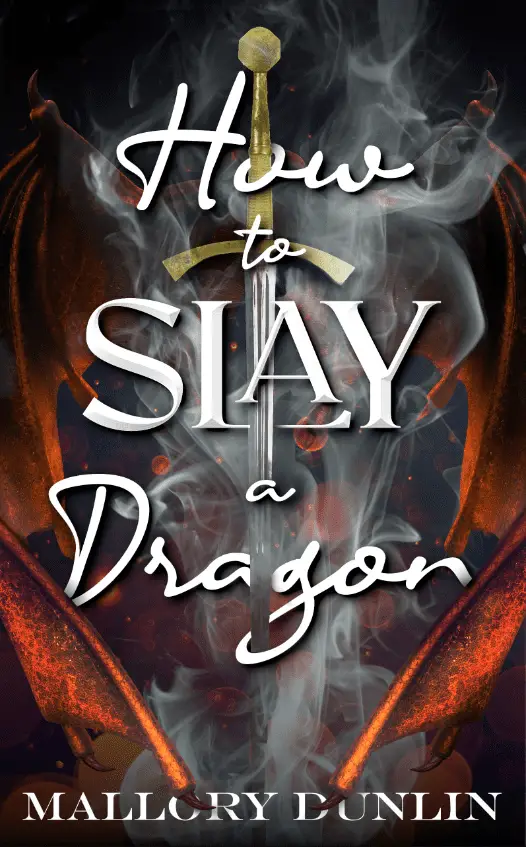
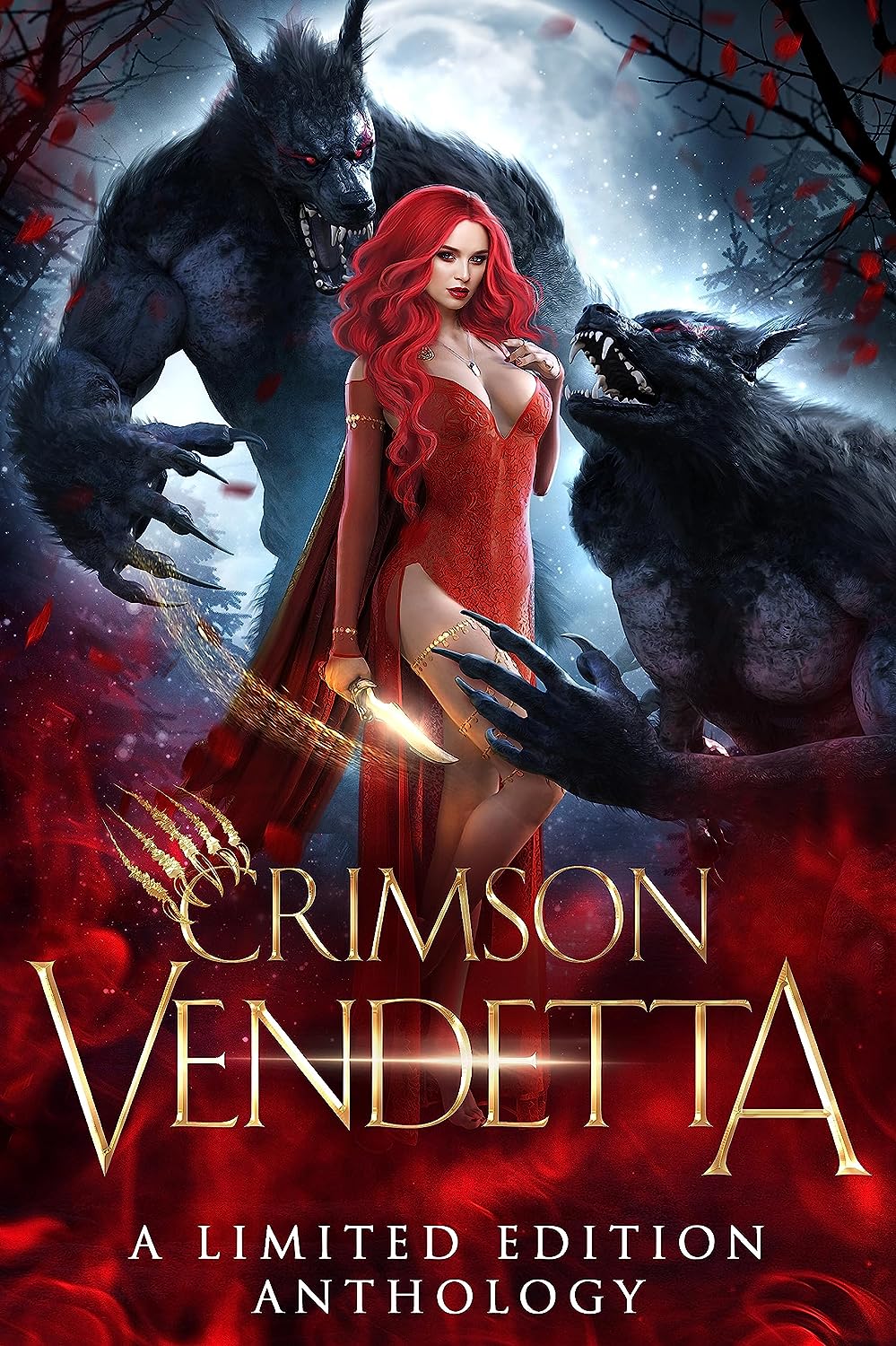
What is “Taming the Wild Hunt” about? Can you give us a sneak peek?
MD: This is a story I’ve been wanting to tell for a while! It’s a high heat MMF enemies-to-lovers romance between the Master of the Wild Hunt, one of his (shapeshifting) hellhounds, and a human woman they run down – and it’s set in the Monsters of Faery universe, in the deep wilds of Faery. You’ll get some more insight into soulmate bonds, as well as a bit more Sarcaryn lore.
As far as themes go, the central focus is on embracing everything you are, no matter how wild or dangerous your depths are.
For a sneak peek, here’s the opening two paragraphs for each of our protagonists:
“I thought the most dangerous thing I’d encounter in the Irish countryside was a Londoner on vacation.
I was wrong.”
“It had been a long time since I’d been intrigued enough by a human to bring them underhill.
After these long years, mortals were all so predictable. You could smell it on the wind, the predators sorting themselves from the prey in the bright song of adrenaline and the sour delight of terror. They liked to think of themselves as greater than the beasts, but when my horns scraped the sky they were no different from the hounds and the deer that fled before them.”
“She ran.
You should never run.”
What do you have planned after the novella?
MD: With the caveat that nothing’s set in stone until it’s actually written, I’ve got plans for three more Monsters of Faery novels after Claimed by the Flame of the Faery and two more Echoes of the Void novels. I don’t have a timeline for them yet, though, because my current project is a quartet of fae enemies-to-lovers arranged marriage romances set in a third universe. The working title for the first one is “King of Shadow and Ice,” and I’m hoping to release it in early 2024.
If you were a character in one of your books, which universe would you be living in and what would you be doing?
MD: The most natural analog for my life would probably be set in the Echoes universe, being the Eye of a Monitor Station somewhere on the Material Plane, so I’m a wizard with a bevy of warlocks. I work at one of the stations close enough to a city that popping in of an evening for dinner wouldn’t be difficult, and (like half the people who meet him) I definitely have a crush on the dark and mysterious Mage-Seneschal.
The day when one of my lurid novels, the one with a shopgirl who ends up as the soul-mated lover of twin fae sorcerers, is featured in an advertisement in one of the trashiest mage reports alongside a “tell-all exposé” about Rain Leyweaver’s secret lovechild is my crowning achievement. I have it framed on the wall above my desk, and the warlocks pretend not to notice.
What are you reading, watching, and listening to currently?
MD:
(Re-)reading: Sunshine by Robin McKinley
Watching: Good Omens Season Two
Listening to: Made in Heights – “Winter Pigeons (Songs to Raise Your Dead Spirits)” album
What do you want your readers to take away from your books?
MD: Honestly, my main goal is for people to have an enjoyable time reading my books! There’s nothing wrong with a little escapism, especially when the world seems so grim. But if readers come away with anything, I hope it’s a feeling that they deserve to be loved well for who they are.
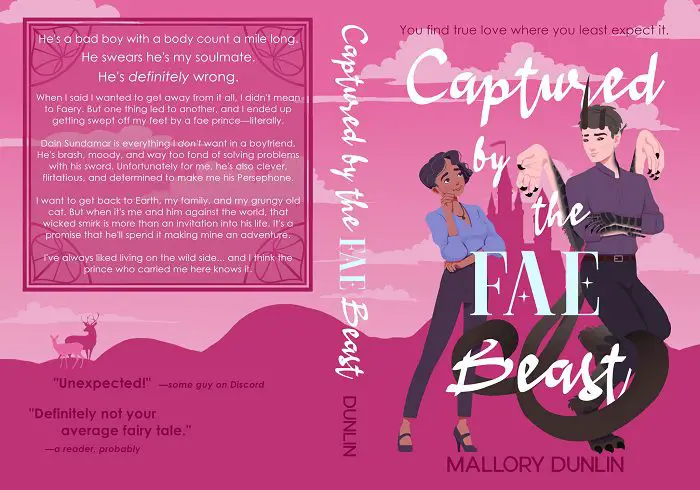
Finally, though certainly I could keep asking you questions all day, you love dragons (me too!). Do you have any other favorite beings?
MD: Any kind of kelpie-like creature, hands-down! Evil, carnivorous horses? Be still, my beating heart.
Thanks so much for talking to us!
You can follow Mallory Dunlin on FB, Twitter, Tumblr, and her website. Check out her books on Amazon!
Images courtesy of the respective artists and Mallory Dunlin
Have strong thoughts about this piece you need to share? Or maybe there’s something else on your mind you’re wanting to talk about with fellow Fandomentals? Head on over to our Community server to join in the conversation!

